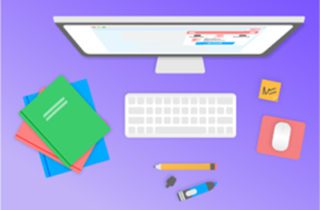Now that the third school year in a row has been disrupted by COVID-19, many students are struggling with academics and other issues that make it difficult for them to focus fully and enthusiastically on learning in the classroom.
Technology and assessments seem like natural partners—after all, the goal of assessments is to collect data on student progress. But as leaders of the Lexington School District Two (LEX2) in South Carolina discovered, just collecting data is not enough.
Education ranks high among industries where cyber incidents and threats occur frequently. From DDoS attacks to ransomware to malware encounters, school districts are at increased risk for harmful and costly security breaches that wreak havoc on systems and programs across departments.
As highlighted in the EmpowerED Superintendent Toolkit, there are three essential focus points of smart IT decision making: total cost of ownership (TCO), student outcomes and budgeting management, and the value of the investment. In “Leadership Strategies for Scaling, Sustaining, and Budgeting for Education Technology Innovations,” three education leaders discuss critical strategic technology planning and investments implemented in their districts to scale and sustain long-term innovation effectively.
With modern assessments, teachers don’t want students to just recite facts from their lessons–teachers want to know whether or not students understand the skills and how to use them. And while there are pencil-and-paper assessments that can provide this information, presenters from a recent edLeader Panel believe, when available, video offers a powerful alternative.
While some students have thrived during the switch to remote and hybrid learning that was caused by the pandemic, many others have had their learning disrupted and fallen behind the timeframes established for meeting state standards.
Improving school districts’ technology infrastructure and capabilities became more important than ever when COVID-19 first arrived. Now, the ongoing efforts to develop and secure schools’ computer systems remain crucial and challenging as district officials respond to fast-changing situations and make plans for the future.
Even before the pandemic, schools increasingly depended on technology for instruction and building operations. With that came an increased threat to cybersecurity.
Athletes live grit and resilience in order to push through stress and tension. They persevere through obstacles, practice self-discipline, and manage their emotions. But wait—don’t these sound like the social-emotional skills teachers are helping students grow?
The effects of the pandemic are continuing to impact students’ school attendance and academic progress, complicating long-standing challenges and creating new ones, but school district officials are continuing to respond with innovative approaches that can help students overcome current difficulties and resume their academic progress.











